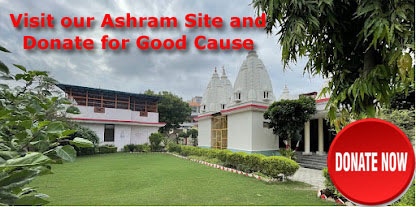Continuation…
Dr. Shanker Adawal
Caster Oil
The oil part is non-toxic.
It is demulcent, laxative, and purgative.
The caster oil is best
administered with milk or fruit juice. When take internally, it treats
constipation, externally; a caster oil fermentation is rubbed over the liver
and other areas of the abdomen. A thick towel that has been rung out in ginger
tea is then applied over the entire abdomen and a heating pad or hot water
bottle is placed over the liver, this will help draw toxins into and through
the liver. It is also used in ointments as a smoothing agent. Caster oil is
used in making contraceptive jellies and creams. It may be used for
facilitating child birth. A gel prepared from castor oil is useful in
dermatitis and is a good protective in occupational eczemas and dermatitis.
Sesame
oil / Blackwood tree
The are normally big
trees, when thin branches are broken the wood is white, after being exposed to
air, it becomes yellow.
It is used for dryness of
the bowel, for which a table spoon of the oil is taken with honey, in the
evening is quite effective. It is commonly used as a medium for therapeutic oils
in which other herbs are prepared.
Olive
Oil
It is slightly yellow or
green colour, used in many preparations for its oil smoothing property. It
makes the skin soft and clean. It used to make soaps and glycerine.
One or two table spoonfuls
taken in the evening are an efficient demulcent. This is excellent to apply
externally to counteract abrasions and dryness. The leaves are antispasmodic,
vasodilating and astringent and they lower blood pressure. It is applied on
burn parts after mixing with lime for treatment.
Brahmi
/ Manduka parni
The other names are
Hydrocotyle asiatica, Umbellifera, Bacopa monniera, Scrophulariaceae.
The part used are root and
plant. It is a brain tonic, sedative, antispasmodic, alternative, diuretic,
astringent.
It is diuretic, aperients and
tonic, given in stoppages of urine with costiveness, also in nervous debility
etc. the plant is applied hot to the chest in bronchitis and cough in children.
The drug Brahmi consist of
whole plant. It is valued in medicine as a tonic for nerves and is prescribed
in nervous disorders, mental diseases, constipation, and as a diuretic i.e. to
promote urination.
Brahmi is perhaps the most
important nervine herb used in Ayurvedic medicine. It revitalizes the brain
cells, removing toxics and blockings within the nervous system, while at the
same time having a nurturing effect. It improves memory and aids in
concentration. A small amount of the fresh leaves are eaten daily for
rejuvenating the mind. It calms the heart and helps guard against heart
attacks.
Brahmi helps us give up
bad habits and addictions of all types. It aids in recovery from alcoholism or
drug abuse, and also helps us in reducing sugar intake. It is a nervine and
antispasmodic agent. It cleans the blood, improves the immune system, allays
excess sexual desire, and is excellent for venereal diseases, including Aids.
It cleanses the kidneys, while calming and soothing the liver.
Brahmi is one of the best
herbs for balancing and rejuvenating Pitta, while a the same time strongly
reducing Kapha. A cup of Brahmi tea taken with honey before meditation is a
great aid in the practice.
There is controversy about
the identity of Brahmi and Gotu Kola. The two herbs are closely related
botanically and possess: similar properties (though Gotu Kola is stronger
diuretic and a weaker nervine).
Shilajit
The steps rocks of the
Himalayan region, warmed by ages of bright sunshine and mated with successive
generations of grass, moss and wildflower, exude a dark sticky substance rich
with medicinal powers. This substance was discovered by the ancient Rishis
thousands of years ago and adopted by Ayurveda for its restorative properties.
They named it Shilajatu or Shilajit.
`There is hardly any
curable disease which cannot be controlled or cured with the aid of Shilajit.’
Charaka, 1st
Century AD
Shilajit possesses great
curative powers and is considered capable of treating many diseases,
particularly those of the aging process. It is an important rejuvenative and
tonic particularly for Kapha, Vata and the kidneys, as in the case of people
who have long suffered from diabetes and asthma. It can be taken for general
health maintenance and is good for those who do much mental work or practice
yoga.
Shilajit is naturally high
in iron and other valuable minerals making it very useful for all wasting,
degenerative diseases, especially diabetes, chronic urinary tract problems,
impotence and infertility. It prompts strong bones and therefore is good for
the healing of fractures, osteoarthritis and spondylosis. It is famous for its
anti-diabetic properties, reducing blood sugar and countering diabetes in the
early stages.
The ancient Ayurvedic
physician used Shilajit to treat, among other things, chronic bronchitis,
digestive trouble, renal and bladder problems, nervous diseases, diabetes,
anaemia and fractured bones. They used it for increased vigour and vitality, as
antiseptic and anti-inflammatory.
Continue…
Dr. Shanker Adawal
Profile: www.connectingmind.com
Research work and articles on Bhrigu Nadi astrology: www.shankerstudy.com
www.shankarsastro.com
Published articles on Articlesbase.com
http://www.articlesbase.com/authors/shanker-adawal/149926
or search keyword "shanker adawal" in google search for published articles
Join my Facebook Group for free Astro Queries: www.facebook.com/adawal
Published articles on Newspapers: http://tinyurl.com/2wyxtfk
Research work and articles on Bhrigu Nadi astrology: www.shankerstudy.com
www.shankarsastro.com
Published articles on Articlesbase.com
http://www.articlesbase.com/authors/shanker-adawal/149926
or search keyword "shanker adawal" in google search for published articles
Join my Facebook Group for free Astro Queries: www.facebook.com/adawal
Published articles on Newspapers: http://tinyurl.com/2wyxtfk


































No comments:
Post a Comment